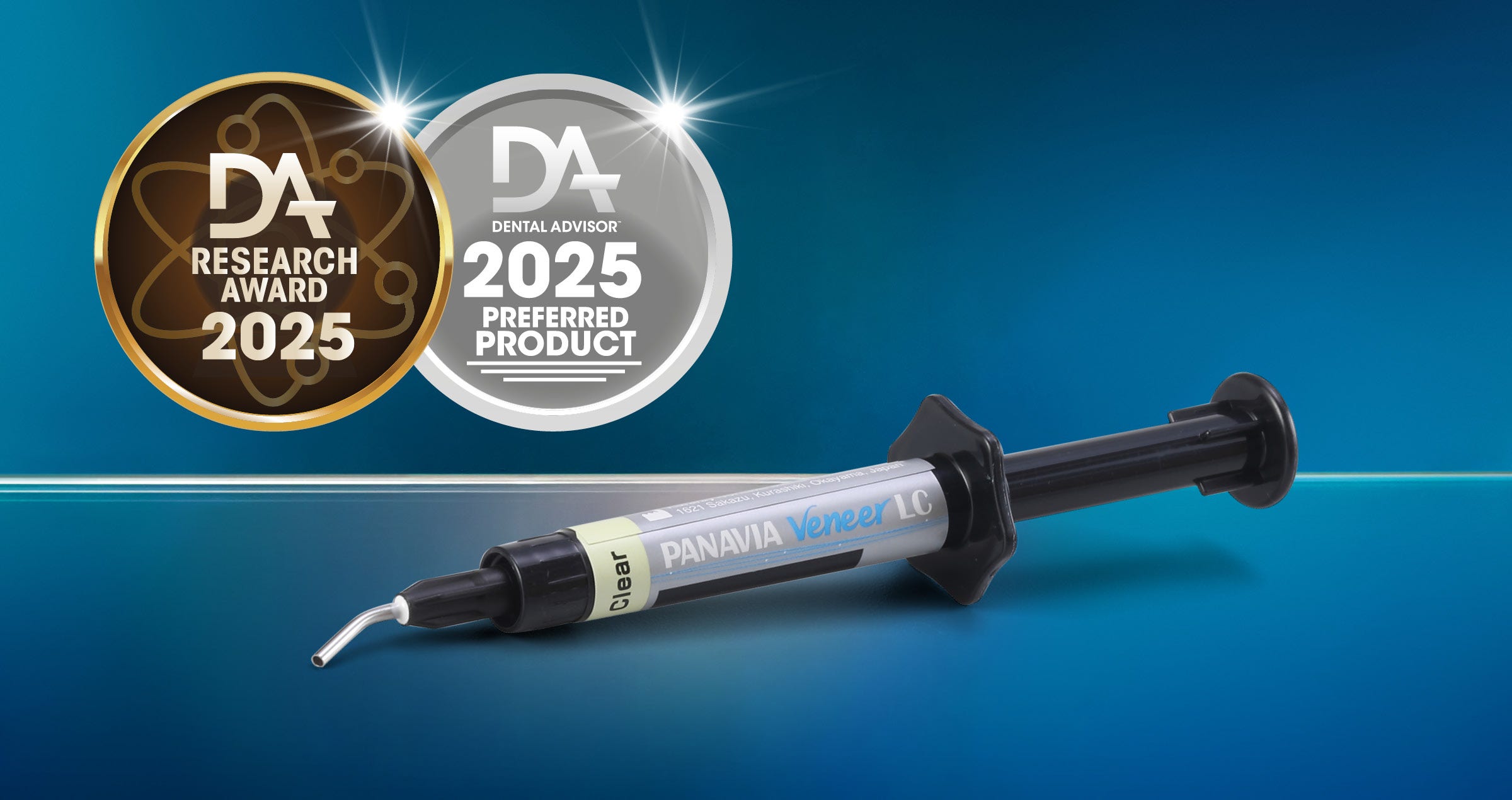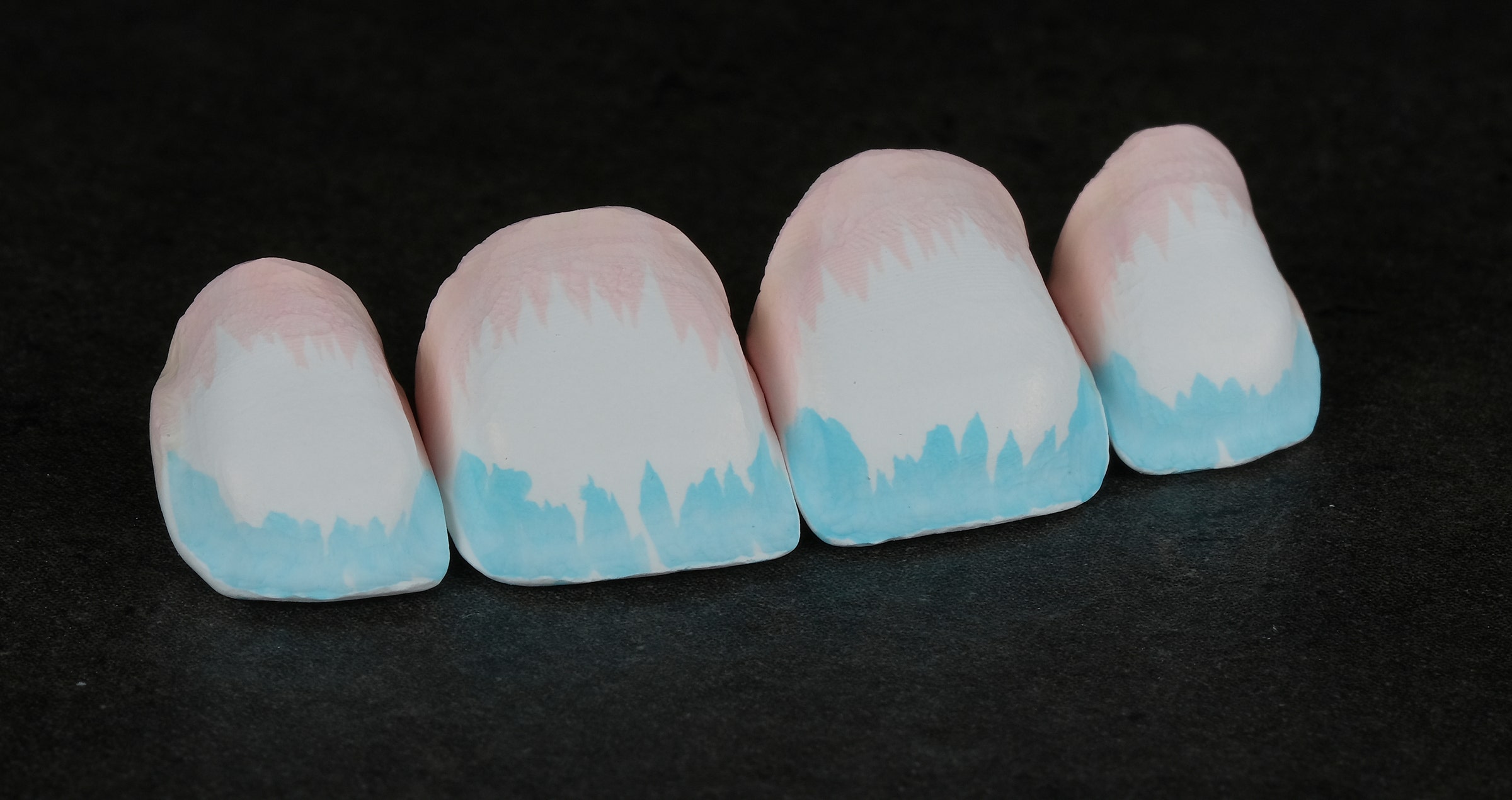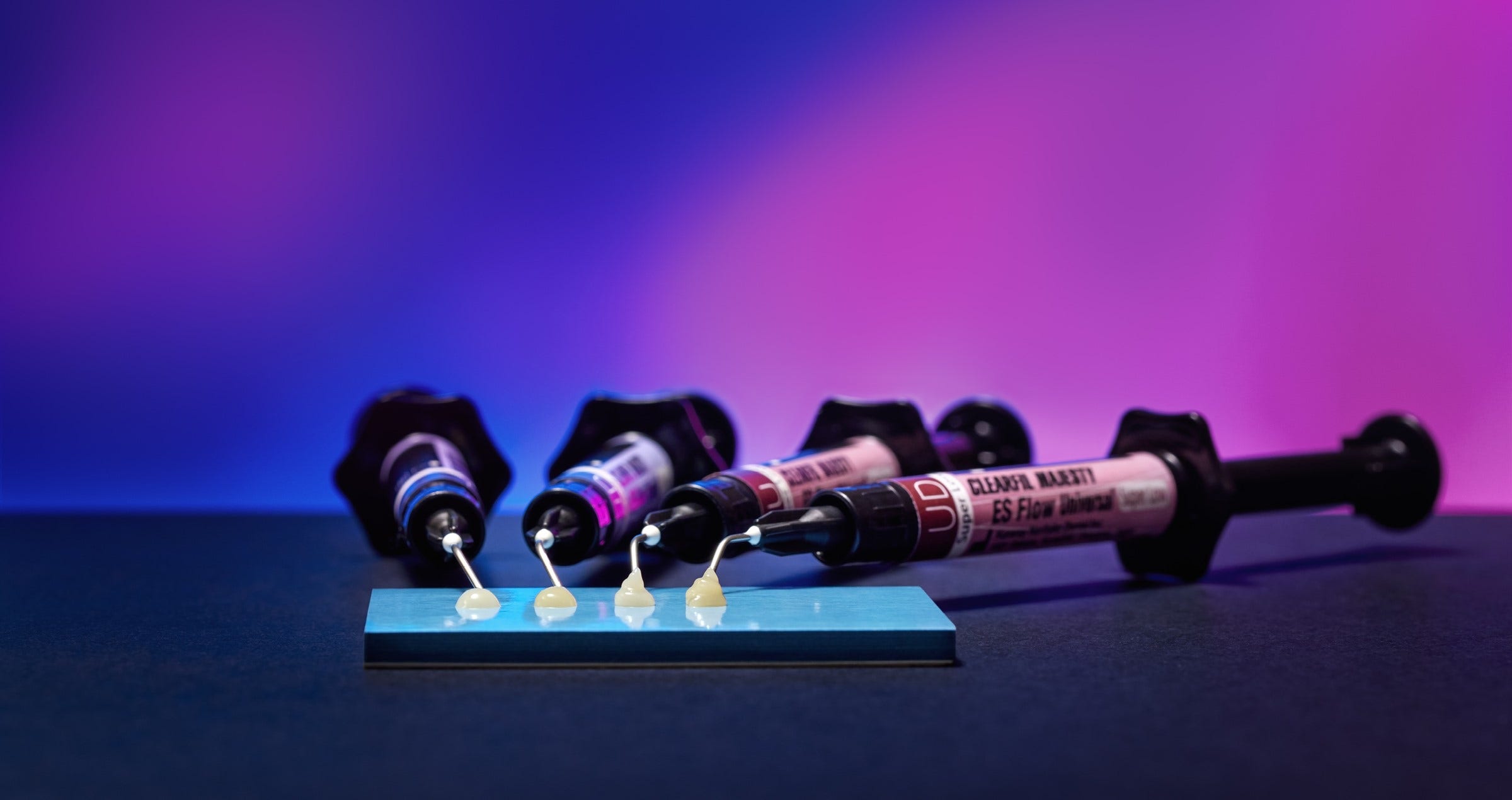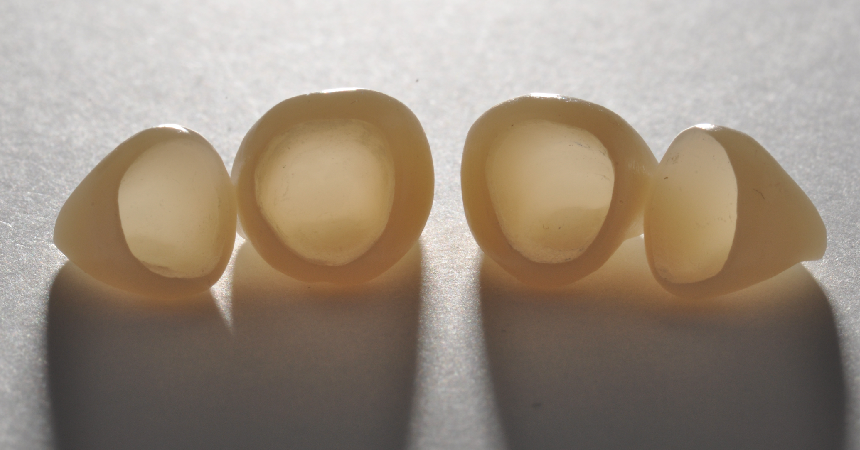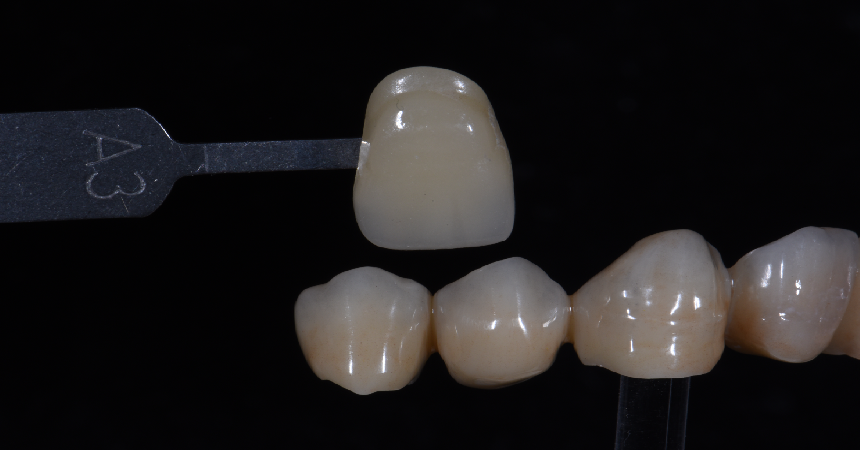Clinical case with diastema closure
By Daniele Rondoni, RDT
A middle-aged patient sought dental advice because she felt uncomfortable with the aesthetic appearance of her upper front jaw, specifically regions 11, 12, 21 and 22. Additionally, she was not happy about the diastema between her upper central incisors.
Fig. 1: Initial situation.
The oral examination showed four crown regions (12-22) and revealed that all of them have deteriorated. Tooth 21 had undergone an endodontic treatment, while teeth 11 to 22 have been newly built up. Due to the deteriorated conditions, all affected teeth were taken into consideration in the planning and designing of new restorations, including the intention to close the diastema between the width-to-length-ratio for the incisors.
The best suitable material for a natural look in combination with a close gingival attachment to the restoration is, in this case, zirconia, because of its biocompatibility and gentleness to the gingival region. The KATANATM Zirconia series from Kuraray Noritake Dental, offers a line-up of high-quality materials combined with true-to-life aesthetics, due to its natural color gradient within the material.
Fig. 2: Preparations, showing discoloration in the cervical area of tooth 21.
Fig. 3: Occlusal view of the preparations.
Fig. 4: The four zirconia crowns after designing followed by milling.
Fig. 5: Result directly after sintering.
To achieve an even more natural-looking and aesthetic restoration, CZR FC Paste Stains were used externally on the zirconia surface.
Fig. 6: Characterization of the restoration.
As often done, Cervical 2 was used to give an orange tint to the cervical area, to accentuate even better the natural tooth gradation. For the incisal areas, Grayish Blue in combination with Value was used to enhance transparency and opalescence. Same procedure applied to the approximal areas. Mamelon Orange 2 was used to reproduce dark orange stain on the mamelons.
Fig. 7: Result after cementation of the four new zirconia crowns. Their shape and chroma blend harmoniously with the arch.
Fig. 8: The vestibular view showing natural-looking characterization.
During a period of five years, annual check-ups showed intact crowns and a healthy gingiva. Additionally, the durability of the restorations, including their mechanical and optical properties revealed no signs of deterioration.


